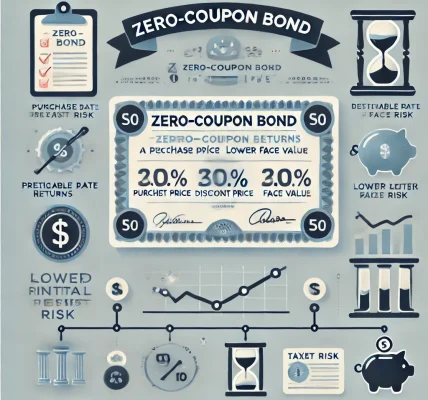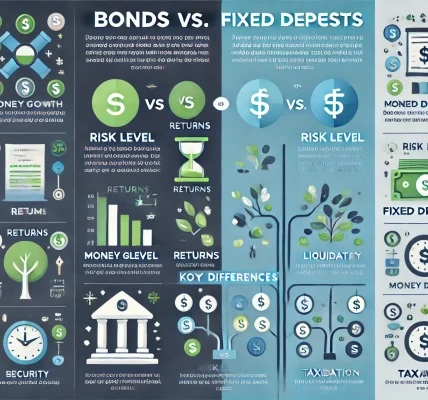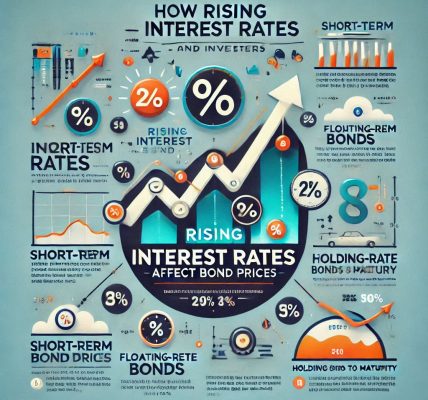In the world of fixed-income securities, callable bonds are a unique and often misunderstood investment vehicle. While bonds are typically issued with a set interest rate and maturity date, callable bonds allow the issuer the right to redeem or “call” the bond before its maturity date. This feature provides flexibility to the issuer, but it introduces additional complexities and risks for investors. In this blog, we’ll explore what callable bonds are, how they work, the benefits they offer, and the risks that come with investing in them.
What Are Callable Bonds?
Callable bonds are bonds that can be redeemed by the issuer before the maturity date. This means that the issuer has the right, but not the obligation, to pay off the bond early. The decision to call the bond is typically made when interest rates decline, allowing the issuer to refinance their debt at a lower rate. Callable bonds are often issued by corporations and municipalities, but they can be found in other markets as well.
The key feature of a callable bond is its call provision, which specifies the conditions under which the issuer can call the bond. This provision may include:
- Call Date: The earliest date the bond can be called.
- Call Price: The price at which the bond can be redeemed before maturity, which is usually at a premium to the face value.
- Call Protection Period: The period during which the bond cannot be called. After this period, the issuer has the right to call the bond at any time.
How Do Callable Bonds Work?
Callable bonds work much like regular bonds in that they pay a fixed coupon (interest) over the life of the bond and return the principal when the bond matures. However, the key difference is that the issuer has the option to redeem the bond early, typically when interest rates decrease.
For example, let’s say a company issues a callable bond with a 5% coupon rate and a maturity of 10 years. If interest rates fall over the next few years, the company may choose to call the bond and refinance the debt at a lower rate, say 3%. This decision could be beneficial to the company, but it could disadvantage the bondholder, who may have expected to receive higher coupon payments for the full 10 years.
The call option provides flexibility to the issuer, but it adds uncertainty for the investor. Because of this, callable bonds usually offer higher yields than non-callable bonds to compensate for the added risk.
Benefits of Callable Bonds
While callable bonds come with their set of risks, they also offer several benefits, particularly for income-seeking investors.
1. Higher Yields
One of the primary reasons investors are attracted to callable bonds is the higher yield they offer. Since callable bonds carry more risk for the investor (due to the possibility of early redemption), issuers typically offer a higher interest rate to entice investors. For investors seeking higher returns, callable bonds can be an attractive option.
2. Flexibility for Issuers
Callable bonds provide issuers with flexibility, particularly in a declining interest rate environment. This flexibility can be beneficial for the issuer as it allows them to refinance their debt at a lower cost. While this may not be ideal for the bondholder, it can create opportunities in the market for other investors who may be able to reinvest the proceeds in higher-yielding securities.
3. Potential for Early Redemption
In some cases, callable bonds may be redeemed early at a premium to the face value, offering bondholders a return that exceeds the coupon payments. While this is not guaranteed, investors may benefit from the call price, particularly if the bond is called in the early years of its life.
Risks of Callable Bonds
While callable bonds offer higher yields, they also come with significant risks that investors must be aware of before investing. These risks stem from the issuer’s ability to redeem the bond early, which can have adverse effects on the investor’s returns.
1. Reinvestment Risk
Reinvestment risk is one of the most significant risks of callable bonds. If the bond is called early, the investor may be forced to reinvest the proceeds at lower interest rates, especially in a declining interest rate environment. This can lead to lower overall returns, as the investor may not be able to find other bonds with similar yields.
2. Call Risk
Call risk refers to the risk that the bond will be called when interest rates are low. When interest rates fall, issuers are more likely to call the bonds and refinance at a lower rate. This could occur even if the investor is satisfied with the current coupon payments. The investor may be left with the need to reinvest in lower-yielding bonds, reducing their income from the investment.
3. Price Volatility
Callable bonds tend to be more volatile than non-callable bonds. This is because the possibility of the bond being called affects its price. In a low-interest-rate environment, callable bonds are more likely to be called, which can limit their price appreciation. Conversely, in a high-interest-rate environment, the bond may trade closer to its face value, making it more volatile.
4. Uncertainty in Duration
Callable bonds have an uncertain duration, which makes them more difficult to value. The duration of a bond refers to the time it takes for the bond’s cash flows to be repaid. Since the bond may be called early, its effective duration can be shorter than originally expected. This uncertainty can complicate bond pricing and make it harder for investors to gauge the bond’s true value.
When Should You Consider Callable Bonds?
Callable bonds are best suited for investors who have a higher risk tolerance and are looking for higher yields. If you are willing to accept the risks of reinvestment and call risk in exchange for potentially higher returns, callable bonds may be a good fit for your portfolio. However, it’s important to carefully assess the interest rate environment, issuer creditworthiness, and bond call provisions before investing in callable bonds.
If you are concerned about call risk and reinvestment risk, you may want to consider diversifying your bond portfolio by including non-callable bonds or bonds with shorter maturities. This can help mitigate the impact of early calls on your overall returns.
Conclusion
Callable bonds can offer higher yields and flexibility, but they also come with significant risks. Understanding the mechanics of callable bonds, their benefits, and the risks they pose is crucial for making informed investment decisions. While they can provide attractive returns, the potential for early redemption, reinvestment risk, and price volatility should not be overlooked.
Investors looking to add callable bonds to their portfolio should carefully assess their risk tolerance and investment goals. Consulting with a financial advisor can also help ensure that callable bonds are a suitable addition to your bond portfolio.




